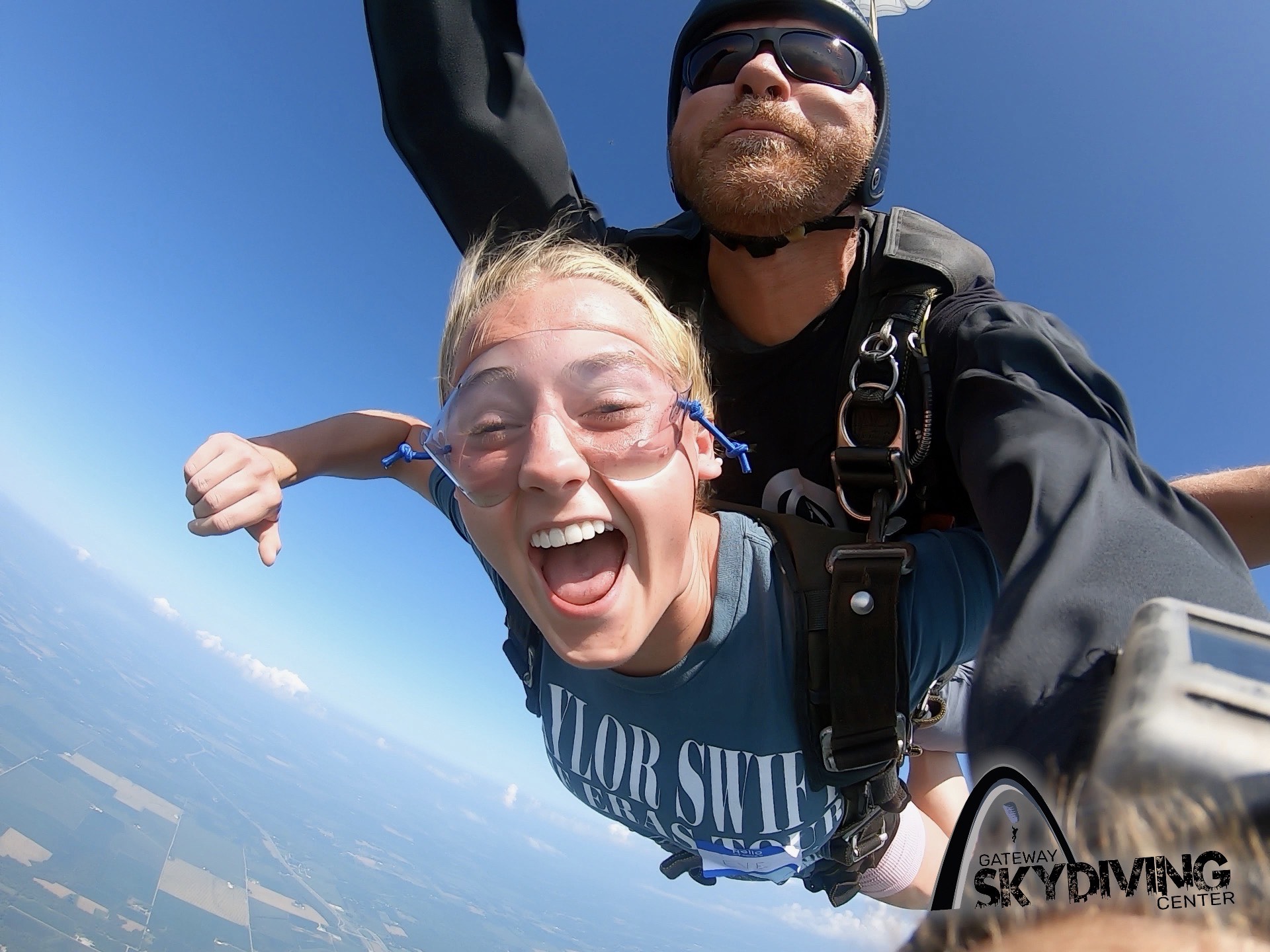What goes up must come down. It pretty much sums it up, right? End of the story. But when it comes to skydiving, not really….
Yes, of course, gravity is what makes skydiving possible. Newton figured out that whole falling puzzle a while back, but the thing is, gravity is only one of the forces at work on us when we jump (although nobody would blame you for assuming that skydiving is simply falling). Believe it or not, we as humans can fly, and no, we aren’t kidding. We absolutely can, but what we can’t do particularly well (at least on our own) is glide. But make no mistake. What we do between the time we exit the aircraft and open our parachutes is flying.
“But wait,” you say, “I remember from high school science that everything, regardless of size or weight, is supposed to fall at the same speed, so if you can’t go faster or slower, how is that flying? You’re just dropping like a stone, right?”
Well, skydiving takes advantage of a few different forces, and gravity is, of course, the primary one. Although it is correct that everything from a bowling ball to a feather will fall at the same speed, that only holds true in a vacuum. Which brings us to the real secret sauce.
The real magic is the air itself, and the incredible ways in which we can put it to work for us. In a vacuum, everything can fall at the same speed because nothing is subjected to drag or air resistance. And that right there is key! In the presence of air resistance, objects with different masses will fall at different speeds due to the effect of air resistance on their surface area and shape. And this is where a term you may have heard before comes into play: terminal velocity.
Terminal velocity in skydiving is the maximum speed a human being can reach in a specific body position. So, say you’re in freefall in that belly-to-earth position you’ve most likely seen photos of. The fastest speed you’ll reach will be around 120 miles per hour, primarily because of the surface area you are presenting to the air. The more surface area you present to the air (we call it relative wind in skydiving, which simply means the direction the wind ‘appears’ to be coming from given your perspective), the more drag you’ll be subjected to and the slower you’ll go. Which, of course, also means the less surface you present to the wind, as you would when falling headfirst, the faster you’ll go.
Now here’s the really cool part. The drag that allows your entire body to go faster or slower depending on your body position also affects your limbs independently, which means that creating more drag on one arm, leg, or side of your body will push and turn you one way or the other, allowing you an incredible level of control over your movements in the sky. Your speed through the air and the drag you exert on the different control surfaces that are your arms and legs allow you to fly!
Now of course, there’s a whole lot more that goes into it. Skydiving is a sport that combines the science of aerodynamics with the thrill of adventure, allowing people to step outside their comfort zones and experience the exhilaration of flight. From the moment you exit the plane, propelled by a force that is both exhilarating and terrifying, you become part of a community of individuals who share the same passion for flying. Whether you are a professional skydiver, an amateur, or simply curious about the sport, skydiving has something to offer everyone.
The rush of adrenaline as you hurtle towards the ground, the feeling of weightlessness as you freefall through the air, the sensory overload of the wind rushing past your body, all combine to create an experience that is both unforgettable and addictive. And yet, for all the danger and excitement of the sport, skydiving also offers a sense of peace and tranquility. As you float gracefully towards the earth, suspended by nothing more than a parachute and your own skill and determination, you become aware of a world that is both beautiful and fragile, a world that is worth preserving and protecting.
So, if you’re looking for an adventure that will inspire and challenge you, that will take you beyond the limits of what you thought was possible, then skydiving is definitely worth a try. Whether you choose to jump solo or in tandem with an experienced instructor, the thrill of flight and the sense of accomplishment that comes with completing a successful jump are unparalleled. So go ahead, take the leap, and discover the magic of skydiving for yourself!




